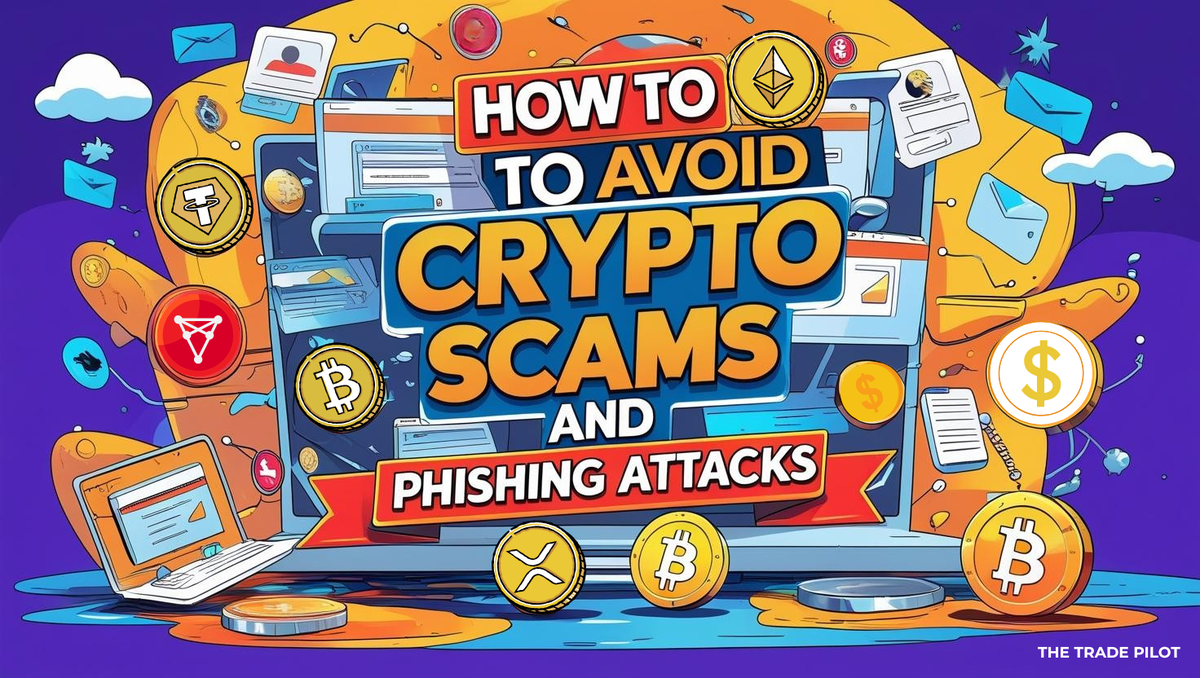As the popularity of cryptocurrencies continues to grow, so does the number of scams targeting new and experienced users alike. From phishing attacks to fake exchanges and malicious apps, crypto scams have become more sophisticated and harder to detect. Whether you're a beginner or a seasoned trader, understanding how to recognize and avoid these threats is essential for safeguarding your digital assets.
In this article, we’ll explore the most dangerous and common types of crypto scams, explain why they’re so effective, and offer practical steps to protect yourself from falling victim.
Common Types of Crypto Scams and Why They're Dangerous
- Phishing Attacks
Phishing scams involve fake emails, websites, or messages that impersonate legitimate platforms like exchanges or wallet providers. The goal is to trick users into revealing private keys, passwords, or login credentials. These scams are especially dangerous because they can look nearly identical to real services, leading victims to unknowingly give hackers full access to their accounts. Once your credentials are stolen, attackers can empty your funds within seconds. - Fake Exchanges and Wallets
Some scammers build professional-looking trading platforms or wallet applications that are designed to steal user deposits or sensitive information. These fake services may even have functioning interfaces to gain trust before disappearing with user funds. Victims often only realize something’s wrong once it’s too late and their money is gone. These scams are harmful because they exploit your trust and often mimic real services perfectly. - Pump and Dump Schemes
In these schemes, a group of people artificially inflate the price of a low-volume coin through coordinated hype and misleading information, usually on social media. Once the price spikes, the group sells off their holdings, crashing the price and leaving latecomers with worthless coins. These scams are dangerous because they create the illusion of legitimate investment opportunities, preying on inexperienced traders’ fear of missing out (FOMO). - Giveaway Scams
Giveaway scams promise to multiply any crypto you send to a specific wallet address. They often use fake endorsements from celebrities or social media influencers to appear credible. These scams are especially risky because they can go viral, fooling thousands of users. No legitimate company or person will ever ask you to send crypto in exchange for more. - Impersonation Scams
Scammers may pose as popular crypto influencers, exchange support agents, or project developers in an attempt to extract money or personal information. They often reach out through direct messages on social media or forums. These scams are dangerous because they prey on your trust in authority and familiarity with known personalities. - Rug Pulls
A rug pull happens when developers launch a new token, attract investment through marketing and hype, and then abruptly remove all liquidity or abandon the project. These scams can wipe out entire communities and leave investors holding worthless tokens. Rug pulls are particularly harmful because they often disguise themselves as legitimate startups. - Malware and Spyware
Cybercriminals use malicious software hidden in fake apps, browser extensions, or phishing links to gain access to your device. These tools can log your keystrokes, capture screenshots, or even hijack your clipboard to redirect transactions. Malware is extremely dangerous because it can operate silently in the background and compromise even your most secure wallets.
How Phishing Attacks Work
Phishing typically relies on social engineering to trick victims into acting quickly without thinking. For example:
- You receive an email that appears to be from your exchange, urging immediate login due to “suspicious activity.”
- A fake website mimics the look and feel of a legitimate one, except for a subtle misspelling in the URL.
- A pop-up ad offers free Bitcoin but links to a page requesting your wallet credentials.
Once you interact and provide information, attackers immediately use it to access your accounts and steal funds.
Tips to Avoid Crypto Scams and Phishing Attacks
- Double-Check URLs and Domains
Always inspect the website address before logging in or entering any information. Bookmark official sites and never click suspicious links from emails or DMs. - Enable Two-Factor Authentication (2FA)
Use 2FA wherever possible. It adds an extra layer of protection, making it harder for hackers to access your accounts even if they have your password. - Keep Your Private Keys Private
Never share your private keys or seed phrase—not with friends, not with “support agents,” and not online. Keep them stored offline, preferably on paper or a hardware device. - Download Only from Verified Sources
Avoid downloading crypto-related software or apps from unofficial links. Use app stores or directly download from official project websites. - Be Skeptical of Promises
If someone promises high returns with no risk, it's a red flag. Trust your instincts—scams often prey on greed and urgency. - Research Before You Invest
Check the project’s whitepaper, team, community discussions, and audits. Don’t rely solely on flashy websites or hype. - Keep Your Devices and Software Updated
Regular updates patch security vulnerabilities. Make sure your operating system, browser, and crypto apps are up to date. - Use Cold Wallets for Long-Term Storage
Hardware wallets are offline and much safer than keeping large sums on exchanges or hot wallets. - Stay Educated
Scams evolve constantly. Read security blogs, follow trusted voices in the crypto space, and stay informed.
Conclusion
The fast-paced and largely unregulated nature of the crypto world makes it a fertile ground for scams. But by staying alert, questioning too-good-to-be-true offers, and following best practices, you can significantly reduce your risk. Remember: in crypto, you are your own bank—protect your keys, protect your funds.

